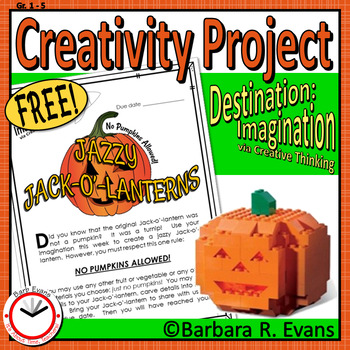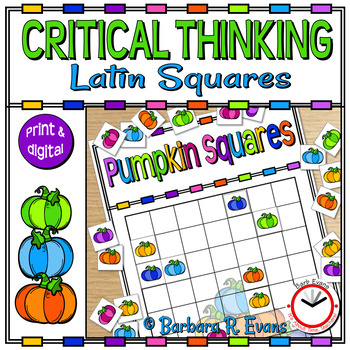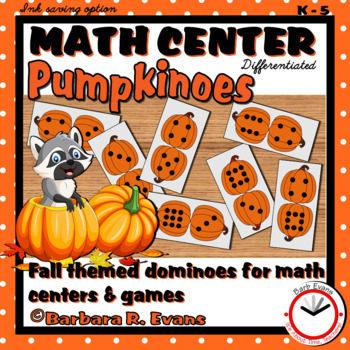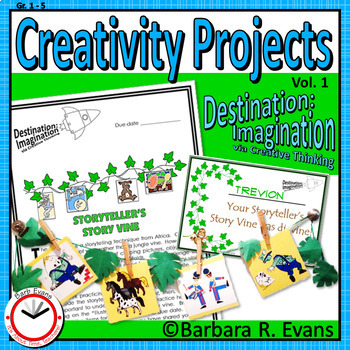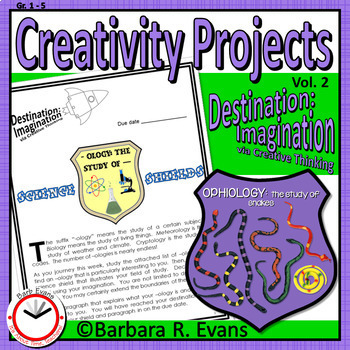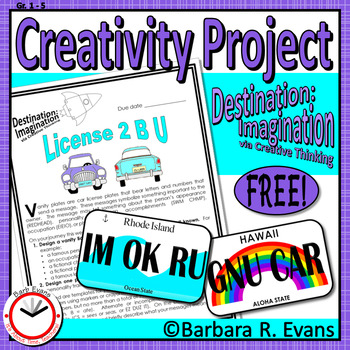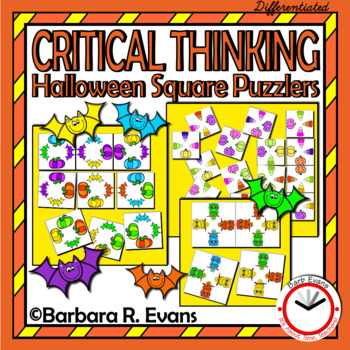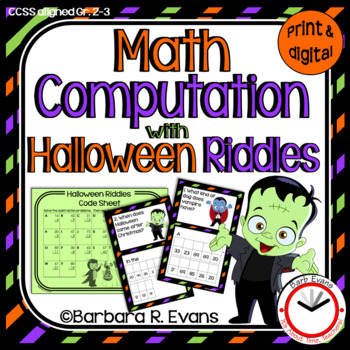- Do you want to cultivate creativity without adding to your overloaded schedule?
- Do you want to build constructive home-school connections?
- Do you want a full year of project assignments that will build right brain thinking?
- Do you want resources that are print-and-go?
Search This Blog
Saturday, August 10, 2024
IT'S ABOUT TIME, TEACHERS, for CREATIVITY PROJECTS!
Wednesday, October 4, 2023
Sunday, July 16, 2023
IT'S ABOUT TIME, TEACHERS, for CREATIVE THINKING CHALLENGES
- Are you looking for weekly challenges to your learners' creative thinking?
- Would you love it to be a home assignment?
- Would you be thrilled to get a full year of challenges that are print and go?
This eclectic collection of activities was created for use in my gifted and talented classrooms. The goal is to promote the 4 traits of gifted children: fluency, flexibility, elaboration, and originality. But really, what child wouldn't benefit from working on those aspects? I have found these projects works very well with heterogeneous groups and have successfully used them with 1st - 5th graders.
These challenges are also a wonderful home-school connection that directs eager parents to work with their children in a constructive manner. Another benefit is that children learn to share their products with purpose and confidence.
All of the project assignments are ready to print and send home. Also included are notes to the teacher to help ensure the success of your students. These notes are based on years of experience with the challenges.
TRY IT BEFORE YOU BUY IT. You can get a better sense of what this project offers by checking out this FREE activity that is included in Destination: Imagination via Creative Thinking Vol. 2:
Tuesday, October 11, 2022
PUMPKIN TIME in the CLASSROOM
It's time for all things pumpkin! Pumpkin spice lattes are my fav, but I also have a weakness for pumpkin bread, pumpkin donuts, pumpkin pie, pumpkin cookies, ... You get the idea. And, it's time for some pumpkin fun in the classroom. Here are some of my favorites:
Saturday, February 22, 2014
The ABCs of Architecture
 It's about time, teachers, for the ABCs of Architecture. As an enrichment specialist for my district, I work with students in 2nd - 5th grades. The focus is not limited to academics. My fourth graders endowed with artistic talent embarked on an architectural adventure that resulted in a published book. It was an awesome experience for all involved.
It's about time, teachers, for the ABCs of Architecture. As an enrichment specialist for my district, I work with students in 2nd - 5th grades. The focus is not limited to academics. My fourth graders endowed with artistic talent embarked on an architectural adventure that resulted in a published book. It was an awesome experience for all involved.My students began with a study of basic architectural elements, such as lines, shapes, textures, and form. Inspired by Diane Maddex's book, Architects Make Zigzags, Looking at Architecture from A to Z, we made it our goal to produce an alphabet book about architecture found on historic buildings in our hometown.
 The next step entailed finding an architectural term or terms for each letter of the alphabet. What followed was a flurry of old fashioned research as my charges constructed an impressive list. We only had to stretch to find a term for X, settling on railroad crossing. You may have just done an eye roll, but I was quite proud of my students' reasoning. They learned that our community grew around a railroad crossing for the Illinois Central railroad.
The next step entailed finding an architectural term or terms for each letter of the alphabet. What followed was a flurry of old fashioned research as my charges constructed an impressive list. We only had to stretch to find a term for X, settling on railroad crossing. You may have just done an eye roll, but I was quite proud of my students' reasoning. They learned that our community grew around a railroad crossing for the Illinois Central railroad.Armed with their alphabetical lists and sketchpads, we embarked on a bus and walking tour of the downtown region. Can there be anything sweeter to a teacher's ears than the zealous exclamations of 9 & 10 year olds as they recognize a cupola, gargoyle, or keystone? While our hosts gave us facts and fascinating stories about the buildings on our tour, my students sketched.
Back at school, the 4th grade crew drew pen and ink illustrations of the elements they sketched. They composed the text explaining their terms and identifying the buildings upon which they were found. PACA and HPC provided enough funds to allow us to professionally bind several copies of our books. Those copies can now be found at the city library, our school library, in the offices of PACA and HPC, and in the city building. Each student received a copy fresh off the school's copy machine.
Following are some excerpts from our book:











